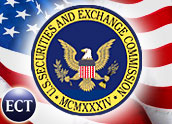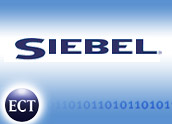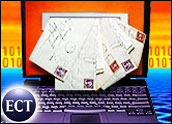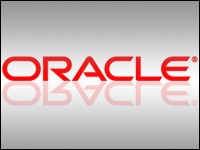
Maine isn’t normally considered a hotbed for emerging-technology entrepreneurialism. Yet that’s where IntelliCare, a healthcare call center outsourcing company, started in 1997. By 1999, the company had put its Yankee pragmatism to work to create a distributed networking model for telephonic nursing driven by its own clinically based CRM application.
Today, more than 250 healthcare organizations nationwide, including Oakland’s Children’s Hospital, Magellan Health Services, and Group Health Cooperative, use its outsourcing contact centers.
Nearly 80 percent of IntelliCare’s contact center representatives are nurses working from home. Many are highly trained specialists with subspecialty expertise in specific disease states, like cardiac nurses specializing in congestive heart failure, diabetes nurses focused on patients with complex diabetes, or smoking-cessation specialists. Remote working allows nurses to blend their careers with their families and other interests.
Telephonic Nursing Emerges
Victor C. Otley III, CEO and chairman of the board, told CRM Buyer that the company was founded on the belief that nurse call centers, or telephonic nursing, provide a more cost-effective and convenient means of dispensing health information to patients.
IntelliCare’s customers are large physician groups, hospitals, health systems, health plans, disease-management companies, and other healthcare employers. To support them, the company has located data centers in Portland, Maine; St. Louis, Missouri; Dallas, Texas; Columbia, Maryland; Bristol, Connecticut; and Buffalo, New York. The company says it plans to expand its centers to at least three more around the country in the near future.
Going for the Vertical
In the beginning, Otley explained, IntelliCare ran on a licensed CRM program that was a sort of nurse triage application. Then, in 1999, the company developed a healthcare-specific CRM application that was clinically focused and deployed in a distributed operating environment in an ASP-like model.
“Overall, we have been saying for a long time that verticalizing CRM is the way to go,” Esteban Kolsky, research director of CRM and e-business at Gartner, said to CRM Buyer. “We have seen many smaller and midsize vendors do very well in small niches,” he said.
Kolsky explained that he didn’t expect Siebel to be able to compete at the specific-function level like IntelliCare, but he does expect the company to win at the enterprise-function level, where integration, flexibility, and multiple functions are necessary.
Explaining that generic CRM packages don’t seem to offer the specific clinical requirements needed, Otley said that this left a gap for his company to develop a CRM solution based upon the essential clinical guidelines, knowledge bases, workflows, documentation, and quality auditing capabilities the healthcare market required.
For his part, Kolsky pointed out that vertical-centric applications are sometimes cheaper and better fitted than Siebel solutions and noted that the cost per agent for Siebel averages between US$1,500 to $2,000 or more, depending on what modules are being used.
Converging Technologies
After seeing how generic teleservice companies struggled with telecommuting, Otley said that his company saw that the technology required expensive investments in dedicated or fixed bandwidth circuits into a home to create the infrastructure for supporting telecommuters.
That changed in about 1999 with improvements in network-based switching, especially for the home office market. While it wasn’t scalable, it showed that telecommuting was plausible.
Because IntelliCare’s primary labor force was a registered nurse (RN), who is professional and loyal, developing an infrastructure for remote workers would benefit both. Otley explained that IntelliCare designed a PC,network-based architecture that allowed its nurses to telecommute using very low bandwidth and that also supported the centralized quality control and monitoring of the calls critical to the company.
Today, IntelliCare has migrated away from custom telephony solutions to more standards-based systems to focus on its CRM solution, according to Otley.
Distributed Model Succeeds
Typically, IntelliCare takes a brick-and-mortar contact center and rapidly deploys its distributed operating model by having the agents telecommute and sometimes consolidate the space. This moves customers from the traditional contact center approach to a virtual one or a combination of onsite and remote services.
While many nurses provide their own PCs and phone headsets, IntelliCare provides the infrastructure. The telephonic functionality resides on a nurse’s PC, and IntelliCare drives all the connections, call passing, recording, and conferencing that are part of the standard workflow. A standard phone line handles voice, while a virtual private network (VPN) sends data that meets Health Insurance Portability and Accountability Act (HIPAA) requirements for security and patient privacy.
Status Quo Is Competition
From a competitive perspective, Otley believes that the status quo—people running and operating their own centers—is the major factor. Otley stated that the company’s healthcare-specific CRM application gives it a competitive edge but that its distributed model is its real advantage.
He indicated that he thinks that as people become more aware of the quality improvements and cost reductions that a remote contact center offers, they areincreasingly receptive to outsourcing. “Typically, we can save organizations 30 percent over their previous contact center costs,” he said.
Yankee Group program manager Sheryl Kingstone said that the status quo of in-house developed solutions is the biggest competitor for any CRM solution.
“IntelliCare looks like it has a unique solution that would be interesting to tie to hospital automation systems for a complete view of the patient,” Kingstone told CRM Buyer.
Nurses in High Demand
A study published by the U.S. Department of Health and Human Services, “Projected Supply, Demand, and Shortages of Registered Nurses: 2000-2020,” says that there is a growing chasm between the demand for registered nurses and the number of nurses graduating.
The study predicts that by 2005, the country will be short more than 149,000 RNs. The problem worsened because, between 1996 and 2000, the number of licensed RNs no longer employed in nursing grew by 52,000 to more than 490,000, leaving an untapped pool of nursing professionals outside the healthcare industry.
Because IntelliCare can tap into the existing pool of RNs who have left nursing for one reason or another, IntelliCare’s remote model has made room for nurses now outside the industry—for example, mothers who’ve chosen to stay home with children and nurses in the later stages of their careers, who have tremendous experience but don’t want to drive or stand on their feet all day.
To manage its staff, IntelliCare has a bidding system for scheduled slots. The company publishes a schedule of what it needs, the skills required, and when it is needed.
“The nurses describe their work with us as all the rewards of nursing without the bedpans,” Otley said.
Balancing Nursing, Motherhood
After graduating in 1998, Heather Kierstead spent two years working as an RN in a hospital setting before coming to IntelliCare. When she worked at a hospital, Kierstead was on a fixed shift. At IntelliCare, she says, she works two 10-hour shifts from 5 p.m. to 3 a.m., which allows her to turn childcare duties over to her husband when he comes home from work. “The schedule is the most important thing to me as a working mom,” she said.
Kierstead said that her telephonic nursing work allows her to serve patients better and balance a busy life as a mother of three. She remarked that when she worked in a hospital, she would leave some days feeling that she hadn’t given the care she wanted to give patients because she was busy completing all the required activities, like delivering medications, food, and drinks to them.
“When I get a call, I can focus on one patient at a time, educate each, help each deal with their symptoms and feel that I’ve done my job as a nurse,” she explained.
Reducing Healthcare Costs
When a patient call comes in, either an interactive voice response front end categorizes it and routes it to the appropriate party, or non-RN screens the call to determine basic information for appropriate routing.
Then, an IntelliCare nurse can often redirect people who think they need emergency room care to urgent care or even assure them that they can wait to see a doctor the next day. Getting the patient to the right medical resource at the right time helps reduce overall healthcare costs.
According to Robert Teolis, market analyst for St. James Hospital and Health Systems, using IntelliCare has averaged the hospital a 50 percent savings over the previous solution. He also said that overall complaints have been quite minimal and that the hospital’s toll-free number has proven to be an easy, convenient tool for patients.
Depending on the IntelliCare service, a nurse subspecialist may handle a dozen different outsourcing customers—physicians’ groups, health plans, or disease-management companies—that are using a similar IntelliCare program. In other cases, a nurse may only deal with one outsourcer, depending on call volume and staffing.
Company Growth
Last month, the company announced plans to acquire Buffalo, New York-based NightCall Physician Services. MightyCall provides telephone nurse triage services supporting 55 physician practices, including after-hours calls for patients and a 24-hour medical help line for Independent Health group members. Currently, NightCall receives 80,000 calls a year from the organizations it supports.
The company’s press release says that IntelliCare will continue to employ the local nurses and deliver daily, around-the-clock medical contact center services to Independent Health’s 350,000 members and the patients of participating physician practices. NightCall will be IntelliCare’s sixth medical contact center and its first in New York.
The company also plans to extend services into other geographic areas aswell as other healthcare service areas.
“Because telephonic nursing improves outcomes, the federal government is looking to expand the idea nationally across the Medicare population,” Otley said.
“And we’re looking at some of the chronic care improvements that the federal government is endorsing, specifically the Centers for Medicare and Medicaid Services,” he said.





















































